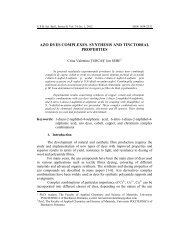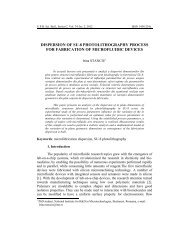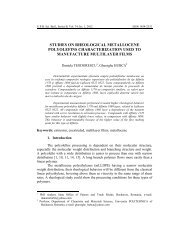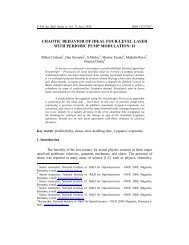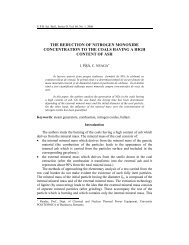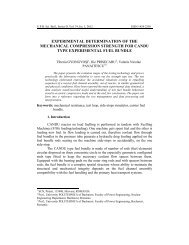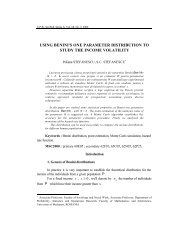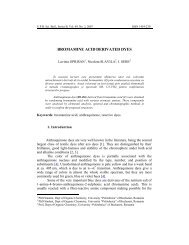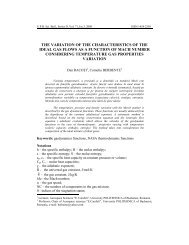integrated quality-environment management ... - Scientific Bulletin
integrated quality-environment management ... - Scientific Bulletin
integrated quality-environment management ... - Scientific Bulletin
You also want an ePaper? Increase the reach of your titles
YUMPU automatically turns print PDFs into web optimized ePapers that Google loves.
252 Ileana Soare, Gheorghe Solomon, Gabriel Iacobescu<br />
1. Introduction<br />
The reduction of both total <strong>quality</strong> and <strong>environment</strong>al costs represents one<br />
of the main objectives of <strong>management</strong> in order to ensure the success and profit of<br />
the company. Within production systems, product/service check-ups, personnel’s<br />
pro-active attitude towards the prevention of production flaws, defect products<br />
remedies, defects corrective measures, complaints handling processes may<br />
increase costs and decrease the profit. Hence, there is a must for a correct<br />
distribution of conformity costs as well as of those likely to reduce nonconformity.<br />
Non-<strong>quality</strong> costs are considered the result of typical flaws of<br />
purchased materials and production processes [1].<br />
Our research deals with a model for the optimization of costs for a<br />
production system based on an <strong>integrated</strong> <strong>quality</strong>-<strong>environment</strong> <strong>management</strong><br />
system to be monitored by means of stock-accounting. Thus, real data can be used<br />
to analyze the efficiency of an <strong>integrated</strong> <strong>quality</strong>-<strong>environment</strong> <strong>management</strong><br />
system as well as its continuous improvement.<br />
2. Costs- Based Total Cost Modelling Set by IQEMS<br />
Since IQEMS and technological processes are linked together in order to<br />
highlight <strong>quality</strong> and <strong>environment</strong>al costs, the present paper suggests a two<br />
method combination approach [1].<br />
Thus, there are two method combination approaches of cost:<br />
- Calculation target-costing;<br />
- Estimated costing assessment.<br />
• Calculation target-costing –that sets global cost for the product lifecycle,<br />
implies the following stages:<br />
- Stage 1 – target costing setup: mainly determined by market analysis<br />
and its main objective is the product lifecycle.<br />
PGprod = PVprod + PMprod<br />
(1)<br />
PMprod = PMprod g + PMprod pg + PSprodc<br />
(2)<br />
where:<br />
- PGprod – global product cost for the entire lifecycle<br />
- PVprod – product selling price<br />
- PMprod – product maintenance price for the entire lifecycle (from<br />
startup to shut-down).<br />
- PMprod g – product maintenance price during warranty.<br />
- PMprod pg - product maintenance price for after warranty.



